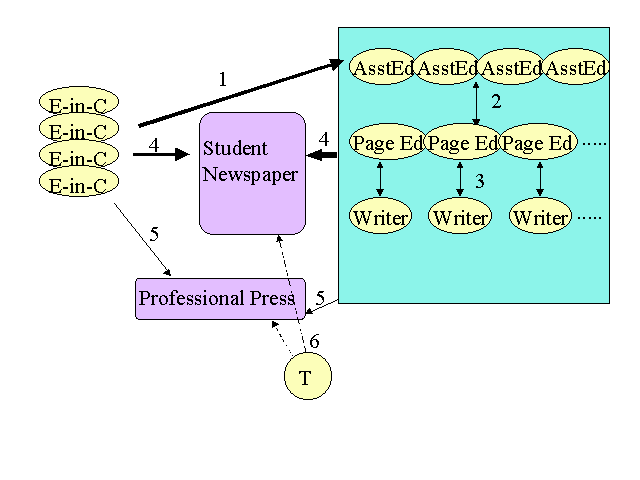|
1-Editors-in-chief to associate editors
2- Associate editors to page editors
3- Page editors to writers
4-Staff to published paper
5-Staff to professional press
6- Teacher to newspaper and professional press
Arrows 1 and 2 symbolize the editors-in-chief consultation with associate editors and the associate editors' work with page editors. In many ways this is an advisory role; editors are making sure that articles are edited, copy is ready for layout, communications have been made with the art director. All editors edit stories. The first edits are returned to the original writers to make the changes (arrow 3), and subsequent edits are made during production week, and are motivated both by improving the writing, as well as fitting the space available
on a particular page.
The most visible critique is observed in arrow 4, the two-day review of
the publication, after the paper has been distributed, which concludes each production cycle. Editors and staff comb through the paper page by page both highlighting problems as well as complimenting students
on work well done. Occasionally the staff will review another high school's paper, or an article from the professional press in a similar manner to beginning journalism (arrow 5), however this is not a common practice, due to the time constraints of the production schedule.
The teacher-to-newspaper pathway (arrow 6) is illustrated with a dotted
line because Esther's role is minimal in providing feedback on student work. Occasionally she will interject in a post production critique, and occasionally she will have a side conversation with an
editor-in-chief about a particularly difficult or controversial story. Otherwise she does not even read every story before the paper is printed, trusting her students to make good decisions.
Next page...
|


